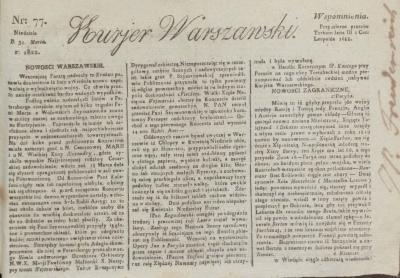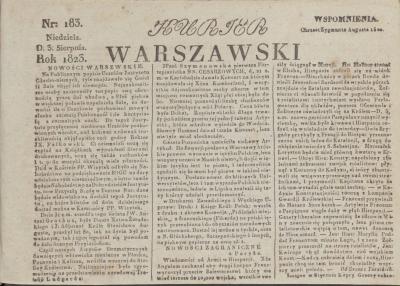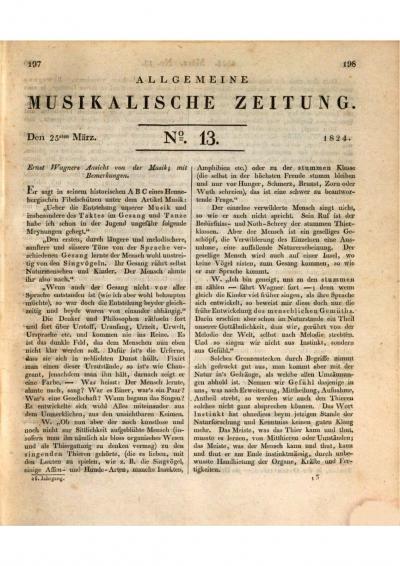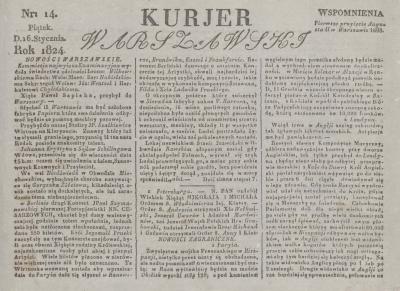Madame Szymanowska and Goethe – a burning love?

In a new letter to Schultz, Goethe talked about the poems that he had since written, and wrote about Szymanowska’s departure from Marienbad: “In passing, I managed several poems which are of value to me and should hopefully not remain without value for friends. I cannot expect any more, particularly as many other good things, like the incredible expression of talent by the pianist Madame Szymanowska, cannot be captured in words. She has gone on her way to Berlin; if you should see or hear the woman, who is as amiable as skilful, you will not blame me for having been captivated by her.”[36] On the following day, Goethe wrote to the Frankfurt banker, author and theatre promoter Johann Jakob Willemer and his wife Marianne: “Madame Szymanovska from Warsaw, the most skilled and delightful pianist, has also stirred up something quite new in me. One is astonished and delighted when she handles the piano and when she stands up and comes towards us with all amiability, one enjoys that just as much.”[37]
Following his return to Weimar on 13 September 1823, Goethe shared the poem for Szymanowska with his closest friends. On 25 September, Chancellor von Müller stated: “I was with Goethe from 5 - 8 o’clock, and his conversation was extremely interesting, confidential and warm-hearted. […] He showed me the poems to Madame Szymanowska, the virtuoso, and to her sister. She is like the air, so circumfluent, so quick to sit, so everywhere, so light and, so-to-speak incorporeal. He showed me her handwriting. […] When I asked a few tricky questions about the virtuoso Szymanowska, he berated me softly: Ach the Chancellor often displeases me unexpectedly. There was not a trace of ill-humour or displeasure to be found in him the whole evening…”[38] After Szymanowska arrived in Weimar on 24 October to visit Goethe for almost two weeks, Johann Peter Eckermann, who was his right-hand and would later be his executor, noted: “He said a young Polish woman has arrived who will play something on the piano. I happily accepted the invitation. […] And what did he present to me? His newest, most favourite poem, his ‘Elegy’ from Marienbad. […] When I had finished reading, Goethe came up to me again. ‘So’, he said, ‘I have shown you something good there.’”[39]
Years later, in December 1831, he told Eckermann the full story of how the three poems that make up the “Trilogy of Passion” had come to be. It was not originally conceived as a trilogy, but “rather it became a trilogy gradually and to a certain extent by chance. At first, as you know, I just had the ‘Elegy’ as an independent poem in its own right. Then Szymanowska, who had been in Marienbad with me during the same summer, visited me and as a result of her charming melodies awoke in me an echo of those blissful days of youth. The stanzas that I dedicated to this friend are, therefore, versed in the metre and tone of that ‘elegy’ and join with this almost automatically as a conciliatory ending. Then Weygand wanted to organise a new edition of my ‘Werther’ and asked me for a preface which was then a very welcome opportunity for me to write my poem ‘An Werther’ [‘To Werther’]. And because I still had a residue of that passion in my heart, the poem automatically became an introduction to that ‘Elegy’. And so it came to pass that all three poems that now stand together were permeated by the same feelings of heartache and that ‘Trilogy of Passion’ came into being, I do not know how.”[40] However, this chronology cannot be correct because the poem “Atonement”, which was dedicated to Szymanowska, was written before 18 August 1823, whilst “Elegy” [“Elegie”] was written in the September and October of the year before Szymanowska’s arrival in Weimar and was still being proofread a number of times at the end of November.[41] In March 1824, the poem “To Werther” then followed on the occasion of the Leipzig anniversary edition of the “Leiden des jungen Werther” [“The Sorrows of Young Werther”] that was published for the first time in 1774.
[36] To Christoph Ludwig Friedrich Schultz, Eger, 8/9/1823. Goethe: Letters (see Note 32), page 207
[37] To Johann Jacob and Marianne von Willemer, Eger, 9/9/1823. Ibid, page 211
[38] Goethe’s conversations with the Chancellor Friedrich v. Müller. Published by C.A.H. Burkhardt, Stuttgart 1870, pages 59 f., online resource: https://www.digitale-sammlungen.de/de/view/bsb11001483?page=74,75
[39] Monday, 27 October 1823. Johann Peter Eckermann: Gespräche mit Goethe in den letzten Jahren seines Lebens. 1823-1832, 1. Theil, Leipzig 1836, pages 68-72, online resource: https://www.digitale-sammlungen.de/de/view/bsb10068560?page=88,89
[40] Thursday, 1 December 1831. Johann Peter Eckermann: Gespräche mit Goethe in den letzten Jahren seines Lebens. Dritter Theil, Magdeburg 1848, pages 360 f., online resource: https://www.digitale-sammlungen.de/de/view/bsb10068562?page=380,381
[41] “30 November. Read the Elegy and read it again. […] Rested after dinner. Countess Line in the evening. Then read the Elegy again with Zelter.” Goethe: Tagebücher (see Note 28), page 149. – Die beschriebene Unstimmigkeit auch bei Stolarzewicz 2014 (see Online), Note 11: “In his description of the creation of his poems Goethe is wrong.” Compare Urzidil 1981 (see Literature), page 361: “Because the poem ‘Atonement’ for Madame Szymanowska had been penned in Marienbad a few days before and under no circumstances after the ‘Elegy’. And the combining of the three poems to form the ‘Trilogy’ did not just happen ‘to a certain extent by chance’, as Goethe stated with the benefit of time behind him, instead it complied with […] the unconscious causal law of the heart and of the poetic affinities.”
















